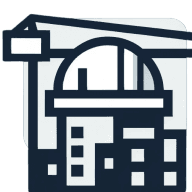In the dynamic world of construction, risk management stands as a critical component. This blog post delves into the intricacies of construction project risk management, offering insights into its importance, strategies, and best practices. We'll explore how to identify, analyze, and mitigate risks in construction projects, ensuring smoother operations and successful outcomes.
The Importance of Risk Management in Construction Projects
Risk management in construction projects isn't an option; it's a necessity. Construction projects, by nature, involve numerous variables and uncertainties. These uncertainties can lead to risks that, if not properly managed, can derail a project, leading to delays, cost overruns, and even project failure.
A robust risk management strategy helps to identify potential risks early, allowing for the development of mitigation strategies. This proactive approach can save time, money, and resources, and can also protect the reputation of the construction company.
Risk management also promotes better decision-making. By understanding the potential risks and their impacts, project managers can make informed decisions that balance risk with reward. This can lead to more successful projects and a stronger bottom line for the construction company.
Identifying Risks in Construction Projects
The first step in construction project risk management is risk identification. This involves identifying all potential risks that could impact the project. These risks can come from a variety of sources, including design issues, contractual disputes, resource availability, environmental factors, and more.
Risk identification should be a continuous process throughout the project. As the project progresses, new risks may emerge, and existing risks may change. Regular risk assessments can help to identify these risks early, allowing for timely mitigation.
Once risks have been identified, they should be documented in a risk register. This register should include details about each risk, including its potential impact, likelihood of occurrence, and proposed mitigation strategies. This register serves as a central repository for all risk information, ensuring that all project stakeholders have access to the same information.
Analyzing Risks in Construction Projects
Once risks have been identified, the next step is risk analysis. This involves assessing the potential impact and likelihood of each risk. This information can then be used to prioritize risks, allowing for the most effective use of resources.
Risk analysis should consider both quantitative and qualitative factors. Quantitative factors include the potential financial impact of the risk, while qualitative factors include the potential impact on project schedule, quality, and reputation.
Risk analysis also involves determining the risk tolerance of the project. This is the level of risk that the project stakeholders are willing to accept. By understanding the risk tolerance, project managers can make better decisions about which risks to mitigate and which to accept.
Mitigating Risks in Construction Projects
After risks have been identified and analyzed, the next step is risk mitigation. This involves developing strategies to reduce the impact and likelihood of each risk.
Risk mitigation strategies can vary depending on the nature of the risk. Some common strategies include transferring the risk (for example, through insurance), avoiding the risk (for example, by changing project plans), reducing the risk (for example, through improved processes or training), or accepting the risk (if it falls within the project's risk tolerance).
Risk mitigation should be a collaborative process, involving all project stakeholders. By involving everyone in the process, you can ensure that all perspectives are considered, leading to more effective mitigation strategies.
Monitoring and Reviewing Risks in Construction Projects
Risk management doesn't end with mitigation. It's also important to monitor and review risks throughout the project. This involves tracking the progress of mitigation strategies, reassessing risks as conditions change, and updating the risk register as needed.
Monitoring and reviewing risks can help to ensure that the risk management strategy remains effective throughout the project. It can also provide valuable insights for future projects, helping to improve risk management processes over time.
Best Practices for Construction Project Risk Management
To wrap up, let's look at some best practices for construction project risk management. These include:
- Start early: Risk management should begin as soon as the project is conceived and continue throughout the project lifecycle.
- Involve all stakeholders: Everyone involved in the project should be involved in risk management. This includes the project team, contractors, suppliers, and even the client.
- Use technology: Risk management software can help to streamline the risk management process, making it easier to identify, analyze, and mitigate risks.
- Learn from the past: Past projects can provide valuable insights into potential risks and effective mitigation strategies. Be sure to review past projects and learn from their successes and failures.
- Stay flexible: Risk management is not a one-size-fits-all process. Be flexible and adapt your risk management strategies as needed to meet the unique needs of each project.
Wrapping Up: Mastering Risk Management in Construction Projects
In conclusion, risk management is a vital aspect of construction projects. It involves identifying, analyzing, and mitigating risks to ensure project success. By understanding the importance of risk management, using effective strategies, and following best practices, you can navigate the terrain of risk management in construction projects with confidence.

